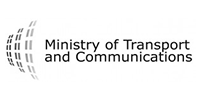
Additional funding to the amount of €364 million has been allocated to basic infrastructure maintenance for the period of 2017–2019. The funding has been transferred from development projects that had not been designated and it is intended for reducing the maintenance backlog in the transport network.
The funding is directed to improvement of roads, railways and private roads and supporting transport projects in urban areas. This additional funding complements the backlog maintenance programme totalling €600 million published by the Government in February 2016.
The Government has granted an additional €1 million to curb the maintenance backlog. The now allocated additional funding for basic infrastructure maintenance is a response to customer needs on several sites across Finland. The preparations for the programme had an emphasis especially on the operational preconditions for businesses, commuting needs and traffic safety, says Minister of Transport and Communications Anne Berner.
The targets for additional funding have been chosen on the basis of the material provided by the Finnish Transport Agency and the ELY Centres. Recent knowledge about customer needs has also been used to a considerable extent.
Roads, private roads and railways will be improved
Of the additional funding, €163 million will be directed to roads and €191 million to railways. Measures that will be carried out on roads include a variety of arrangement for intersections and lanes, road improvements, fast lanes and parking for lorries. The largest individual project is the replacement of the cable ferry in Vekaransalmi by a bridge, for which the cost estimate is €19.4 million.
The improvement of roads that are crucial for businesses and renovation of road structures will be carried out with the funding. Of the additional funding, a total of €30 million will be allocated on national level to government subsidies for improvement of private roads. The additional funding allocated for the subsidies is intended for improving the transport chains and safety of timber transport.
On railways, an important investment is allocated to the routes Tampere–Seinäjoki and Tuomioja–Raahe as well as to improvements carried out on the coastal railway line. In addition, safety equipment that is in poor condition and in which the technology is old will be replaced on several railway sections and railway yards to ensure the operability of the railways and the punctuality of rail traffic.
For example, the transport chains of businesses can be made considerably more efficient by increasing axle loads. The renovation of depots and rail tracks, on the other hand, will promote the freeing of competition on the railways.
Investments in accordance with the targets in MAL agreements directed to four large urban areas.
Financing will also be directed to targets in accordance with the agreements concerning land use, transport and housing (MAL) in the Helsinki region as well as in the urban regions of Turku, Tampere and Oulu. The financing will be used, for example, to support the construction of the Klaukkala by-pass in Nurmijärvi and the E18 ring road in Turku. These measures enhance the efficiency of transport and the land use needs in the metropolitan area.
The Ministry of Transport and Communications reports the progress and effectiveness of the measures transparently and in an up-to-date manner. The funding programme and targets can be viewed (in Finnish) on the Finnish Transport Agency's website.
About The Ministry of Transport and Communications Finland
The mission of transport policy is to ensure safe and smooth everyday travel, maintain the competitiveness of businesses and mitigate climate change by reducing emissions.
Finland's location far from the main traffic and logistics arteries of Central Europe poses major challenges to traffic policy. The needs of various demographic groups must be taken into consideration in the development of the transport system. Efficient and smooth public transport services support the achievement of transport policy objectives. Every effort is made to continuously improve traffic safety and the efficiency of the transport system by means of, for example, intelligent transport services




Comments
There are no comments yet for this item
Join the discussion